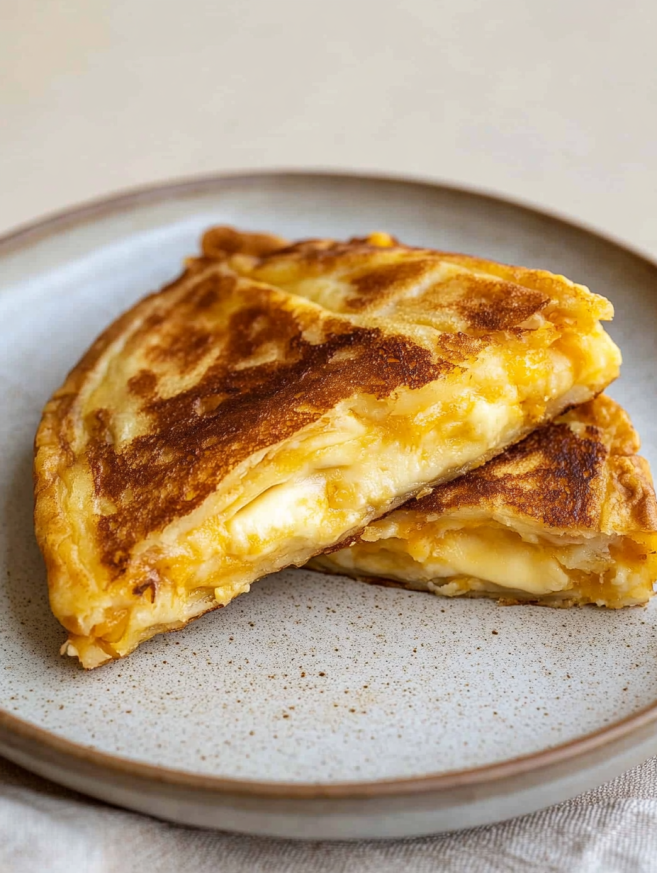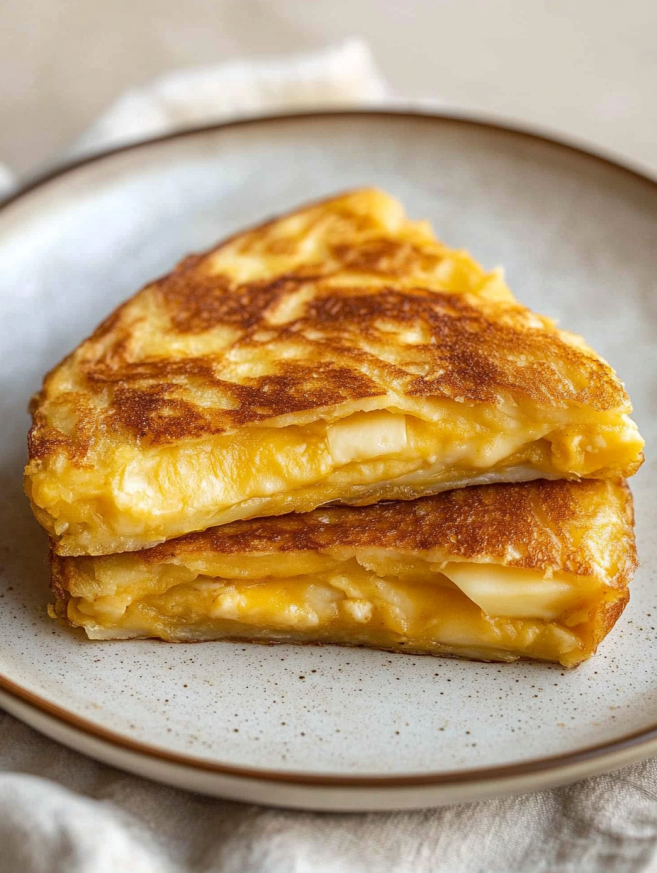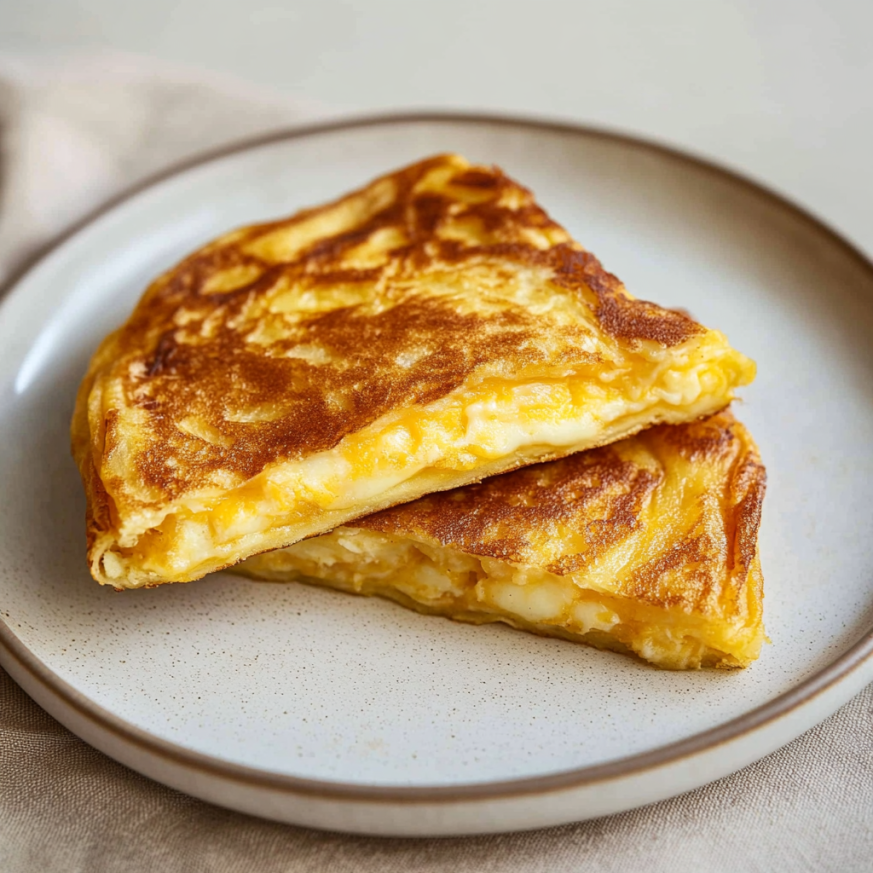There’s something magical about walking into a Spanish kitchen and being greeted by the intoxicating aroma of olive oil, slowly caramelizing onions, and tender potatoes. My first encounter with authentic Spanish tortilla happened during a summer in Seville, where my host grandmother would prepare this golden masterpiece every Sunday morning. The way she effortlessly flipped that thick, custardy omelet still brings a smile to my face years later.
This isn’t just any ordinary egg dish – it’s a culinary tradition that has graced Spanish tables for generations. Furthermore, the beauty of tortilla española lies in its deceptive simplicity, transforming humble ingredients into something truly extraordinary.
Why You’ll Fall in Love with This Spanish Tortilla
Prep Time: 20 minutes
Cook Time: 30 minutes
Servings: 8
This recipe deserves a permanent spot in your cooking repertoire for several compelling reasons. First and foremost, it showcases how premium ingredients can create magic when treated with respect. The slow-cooked potatoes become incredibly tender, while the onions develop a subtle sweetness that perfectly complements the rich, creamy eggs.
Additionally, this tortilla offers remarkable versatility – it tastes equally delicious served hot from the pan or enjoyed cold the next day. Many Spanish families actually prefer it at room temperature, making it perfect for picnics, lunch boxes, or casual gatherings.
The Perfect Balance of Flavors
What sets this tortilla apart from other egg dishes is the generous use of high-quality olive oil. Rather than being wasteful, this technique creates an incredibly moist interior while developing complex flavors throughout the cooking process. The result is a tortilla that’s neither too dry nor too wet, but perfectly balanced with a tender, almost custard-like texture.
Essential Ingredients
Main Components
- 2 lb waxy potatoes (1kg) – Choose firm varieties like Yukon Gold or red potatoes
- 3 large onions, finely sliced – Sweet yellow onions work best
- 8 large eggs – Room temperature eggs incorporate more easily
- 2 cups extra virgin olive oil – Don’t skimp on quality here
- Salt and freshly ground black pepper – Season generously
Serving Suggestions
- Crusty Spanish bread or baguette slices
- Mixed green salad with sherry vinaigrette
- Manchego cheese and olives
- Spanish ham (jamón ibérico) for special occasions
- Fresh tomato rubbed on toasted bread (pan con tomate)
Step-by-Step Instructions
Preparing the Vegetables
Begin by peeling both the potatoes and onions carefully. Cut each potato in half lengthwise, then slice into thin half-moon shapes, approximately 1/8-inch thick. Similarly, slice the onions into thin, uniform pieces to ensure even cooking.
The Oil-Poaching Technique
Heat the olive oil in a large, deep-sided pan over high heat until it begins to shimmer. Add the sliced onions first, cooking them for approximately 5 minutes until they become softened and develop a light caramelization. This initial browning will intensify once the potatoes join the party.
Next, carefully add the potato slices to the aromatic oil. Cook everything together for 10 minutes, stirring occasionally to prevent sticking. Don’t worry if some of the thinner potato pieces break apart – this actually contributes to the tortilla’s rustic charm and helps bind the mixture together.
Straining and Cooling
Using a fine-mesh strainer positioned over a large bowl, carefully drain the potato and onion mixture. This step recovers the precious olive oil, which you can save for future cooking adventures. Allow the vegetables to cool slightly while you prepare the eggs.
Egg Preparation
While the potatoes rest, crack the eggs into a large bowl and whisk them thoroughly. Season generously with salt and add a pinch of freshly ground black pepper. The seasoning is crucial at this stage since it distributes evenly throughout the mixture.
Combining and Resting
Gently fold the cooled potato and onion mixture into the seasoned eggs using a spatula. Mix carefully to avoid breaking up the potato pieces too much – you want to maintain some texture in the final product. Cover the bowl with foil and let it rest for 15 minutes, allowing the flavors to meld together beautifully.
The Cooking Process
Heat 1-2 tablespoons of the reserved olive oil in a non-stick, deep-sided pan over medium heat. Once the oil is warm, pour in the egg mixture and level it gently with a spatula. Cook for 3-4 minutes until you notice gentle bubbling around the edges.
The Famous Flip
Here comes the moment that intimidates many home cooks – the flip! Cover the pan with a large plate, hold it firmly against the pan, and in one confident motion, flip the tortilla onto the plate. Slide the tortilla back into the pan, uncooked side down, and continue cooking for another 3-4 minutes.
Final Rest
Once both sides are golden and the center feels just set, perform the flip one final time onto your serving plate. Allow the tortilla to rest for at least 5 minutes before slicing – this resting period helps the interior finish cooking gently and makes slicing much easier.

Serving Suggestions
Traditional Spanish Style
Serve your tortilla at room temperature, cut into generous wedges alongside crusty bread and a simple green salad. Spanish families often enjoy it this way for lunch or light dinner, accompanied by a glass of Spanish wine or refreshing sangria.
Modern Presentations
For a contemporary twist, try serving smaller wedges as appetizers at your next gathering. They pair beautifully with aioli, romesco sauce, or even a simple dollop of sour cream mixed with fresh herbs.
Breakfast or Brunch Option
Transform leftover tortilla into an elegant brunch dish by serving it warm with sautéed spinach and hollandaise sauce. The rich, creamy texture makes it a perfect canvas for various breakfast accompaniments.
Creative Recipe Variations
Mediterranean Herb Tortilla
Incorporate fresh herbs like parsley, chives, or thyme into the egg mixture for an aromatic twist. These additions complement the potato and onion base while adding vibrant color and fresh flavors.
Cheese Lover’s Version
Fold in crumbled Manchego, goat cheese, or even sharp cheddar just before the final cooking stage. The cheese melts slightly, creating pockets of creamy richness throughout the tortilla.
Vegetable-Enhanced Options
Consider adding roasted red peppers, sun-dried tomatoes, or sautéed mushrooms to create your own signature version. Just remember to cook any additional vegetables beforehand and drain them well to prevent excess moisture.
Meat Additions
While not traditional, small pieces of Spanish chorizo or crispy bacon can transform this into a heartier dish. Add these ingredients sparingly to maintain the tortilla’s delicate balance.
Make-Ahead Tips
Preparation Strategy
The entire potato and onion mixture can be prepared up to two days in advance. Store the cooked vegetables in the refrigerator and bring them to room temperature before combining with the eggs.
Storage Guidelines
A finished tortilla keeps beautifully in the refrigerator for up to four days when properly wrapped. Many enthusiasts argue it actually tastes better on the second day, as the flavors have more time to develop and integrate.
Freezing Instructions
While not ideal, tortilla can be frozen for up to one month. Wrap individual portions in plastic wrap, then aluminum foil. Thaw overnight in the refrigerator and bring to room temperature before serving.
Reheating Methods
If you prefer your tortilla warm, gently reheat slices in a low oven (300°F) for about 10 minutes. Avoid microwaving, as it can make the texture rubbery and unappetizing.
Important Notes
The quality of your olive oil directly impacts the final result, so invest in a bottle you’d be happy to use for finishing dishes. The oil used for cooking can be strained and reused several times for similar preparations.
Additionally, patience during the cooking process ensures success. Rushing the initial vegetable cooking or using too high heat during the final cooking stages often results in burnt edges and undercooked centers.
Remember that the tortilla continues cooking slightly from residual heat even after removing it from the pan. Therefore, it’s better to err on the side of slightly underdone rather than overcooked, as the resting period will complete the cooking process perfectly.

Frequently Asked Questions
Can I use a different type of potato? Waxy potatoes work best because they hold their shape during the oil-poaching process. Russet potatoes tend to fall apart too much, though some cooks prefer this for a more integrated texture. Red potatoes and Yukon Gold varieties are your safest bets for success.
Why does my tortilla fall apart when I flip it? This usually happens when the eggs aren’t set enough on the bottom before attempting the flip. Make sure you see bubbling around the edges and the bottom feels fairly firm when you gently shake the pan. Also, using a plate that’s larger than your pan makes the flipping process much easier.
Can I make smaller individual tortillas instead? Absolutely! Divide the mixture among 4-6 smaller non-stick pans and reduce the cooking time accordingly. Individual tortillas cook faster and are easier to flip, making them perfect for beginners or when serving guests.
How do I know when the tortilla is completely cooked? The center should feel just set but still slightly jiggly when you gently shake the pan. Remember, it will continue cooking during the resting period. A toothpick inserted in the center should come out with just a few moist crumbs attached.
What’s the secret to getting the perfect texture? The key lies in not overcooking the potatoes initially and allowing proper resting time both before and after cooking. The 15-minute rest before cooking allows the eggs to absorb flavors, while the post-cooking rest ensures even doneness throughout.

